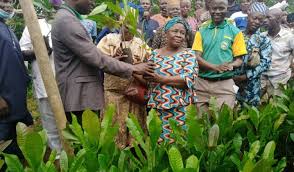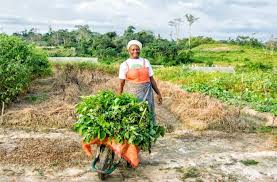Factors of production are not evenly distributed across the world. For instance, one country may have an abundance of fertile land, while another has a wealth of skilled manpower.
Various resources such as capital, mineral deposits, skilled and unskilled labor, as well as tropical and temperate climates, are available to different countries in varying degrees.
This disparity leads countries to specialize in the production of goods and services for which they have the greatest comparative advantage, directly impacting agricultural finance through resource allocation and production efficiency.
Meaning of Comparative Advantage in Agricultural Finance
The law of comparative advantage states that regions or individuals will specialize in producing commodities for which they have a relative or comparative advantage. In the agricultural sector, this principle explains why certain areas focus on specific crops or livestock enterprises.
The differences in relative yields, costs, and benefits become critical factors in understanding this principle as it relates to agricultural production decisions and financial outcomes.
Importance of Comparative Advantage in Agriculture
Certain crop enterprises can be cultivated across diverse soil types and climatic conditions, though with varying yields and production costs. This variation in yield levels and costs leads to specialization, impacting agricultural financing decisions.
For example, cocoa and oil palm farming are concentrated in southern Nigeria, groundnut farming thrives in the northern region, and tea production is dominant in Mambilla, Plateau. Regional specialization in crop and livestock production is well explained by the principle of comparative advantage, influencing financial investments in these areas.
The importance of this law in agricultural finance includes the following:
1. It encourages regions to specialize in enterprises where they hold a relative advantage.
2. Specialization leads to an increase in output and reduces unit production costs.
3. It has the potential to increase the standard of living in all countries through better financial returns.
4. It expands the scope of the international agricultural market.
5. It broadens the scope of product consumption in agriculture.
6. It increases competition among agricultural producers.
7. It promotes international relations through trade in agricultural goods.
Read Also: Concrete Pond Management: Steps to take before introducing the Fish in the Water
The Decision Rule in Agricultural Production

Absolute Advantage/Disadvantage
Consider two competing crops, maize and groundnut, produced in two regions: Region I and Region II. Region I has an absolute advantage in producing both crops, as shown in Table 5.1. However, according to the principle of comparative advantage, each region will specialize in the production of crops for which its resources yield the highest output.
For instance, Region I must give up 2.32 tons of maize for every ton of groundnut (ratio 1:2.32), while Region II sacrifices 1.90 tons of maize to obtain one ton of groundnut (ratio 1:1.90). Despite having an absolute disadvantage in producing both crops, Region II has a comparative advantage in groundnut production, as it sacrifices less maize for every ton of groundnut.
The opportunity cost principle is used here to explain comparative advantage in agricultural decision-making. Thus, Region I specializes in maize production, while Region II focuses on groundnut, reflecting efficient resource allocation and financial benefits.
Comparative/Relative Advantage in Agricultural Finance
To further illustrate this principle, assume that Regions I and II each have 200 hectares of land for growing these crops. If all 200 hectares in Region II are allocated to groundnut production and all 200 hectares in Region I are dedicated to maize production, the gross income from these crops would be N58 million for groundnut and N60 million for maize, highlighting the financial gains from specialization based on comparative advantage.
Read Also: Recommended Volume of Water for Fish Farming on a Concrete Pond
Limitations of the Law of Comparative Advantage
In the above example, only yield levels and prices were considered, excluding other inputs and costs. If additional inputs and their costs were factored in, the decision-making process would become more complex. Each input’s availability and its associated costs can complicate the criteria for specialization.
As a result, the principle of comparative advantage faces limitations when choosing the most financially beneficial enterprise. In such cases, agricultural managers may need to use programming models to make more informed financial decisions.
This principle serves as a foundational guide in agricultural finance, but its limitations must be addressed through more advanced financial models.
Do you have any questions, suggestions, or contributions? If so, please feel free to use the comment box below to share your thoughts. We also encourage you to kindly share this information with others who might benefit from it. Since we can’t reach everyone at once, we truly appreciate your help in spreading the word. Thank you so much for your support and for sharing!
Read Also: Adaptive Means of Animals Coping with the Environmento






